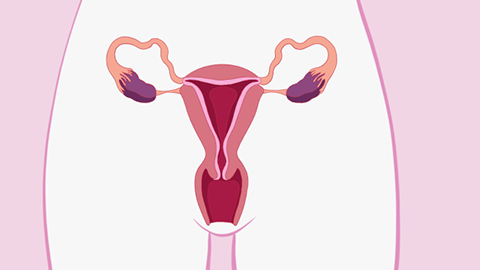What are the causes of cervical erosion?
Under normal circumstances, cervical erosion may be caused by hormonal changes during the reproductive years, physiological ectropion of cervical columnar epithelium, spread of bacterial vaginosis, irritation from cervicitis, human papillomavirus (HPV) infection, and other factors. It is recommended to seek timely medical consultation, identify the underlying cause, and improve the condition under a doctor's guidance through general treatments, medication, and other methods. Detailed explanations are as follows:

1. Hormonal changes during the reproductive years: Women of reproductive age typically have higher estrogen levels, which can cause the columnar epithelium inside the cervical canal to migrate outward onto the cervical surface. This appears as erosion-like changes and is considered a physiological phenomenon. No special treatment is required; regular cervical cytology examinations and HPV testing are sufficient.
2. Physiological ectropion of cervical columnar epithelium: Some women are born with columnar epithelium naturally extending to the external cervical os. This appears similar to erosion upon visual examination but typically causes no significant discomfort. No treatment is necessary; however, maintaining sexual hygiene, having a regular sexual partner, and avoiding unclean sexual practices are recommended.
3. Spread of bacterial vaginosis: Imbalance of vaginal flora can lead to bacterial vaginosis, wherein bacteria ascend to infect the cervix, irritating the cervical epithelium and causing inflammatory erosion, often accompanied by abnormal vaginal discharge odor and itching of the external genitalia. Patients should follow medical advice to use medications such as metronidazole suppositories, clindamycin phosphate suppositories, or tinidazole suppositories to treat vaginitis.
4. Cervicitis irritation: Infection with pathogens such as Chlamydia or Mycoplasma can cause cervicitis. Persistent inflammation irritates the cervical epithelium, causing congestion, damage, and erosion-like changes, often accompanied by pain in the lower back and increased vaginal discharge. Patients should follow medical advice to use antibiotics such as azithromycin capsules, doxycycline hydrochloride tablets, or cefixime dispersible tablets for anti-infective treatment.
5. Human papillomavirus infection: Persistent infection with high-risk HPV types may lead to cervical epithelial lesions. These lesions may appear as erosion-like changes and could potentially progress to cervical disease over time. Patients should follow medical advice to use medications such as recombinant human interferon α2b gel, Baofukang suppositories, or anti-HPV bioprotein dressings to assist in viral clearance.
In daily life, avoid frequent use of irritating feminine washes; gentle cleansing with warm water is sufficient. In terms of diet, reduce intake of spicy and fried foods, and consume more fresh vegetables and fruits to enhance overall immunity.




